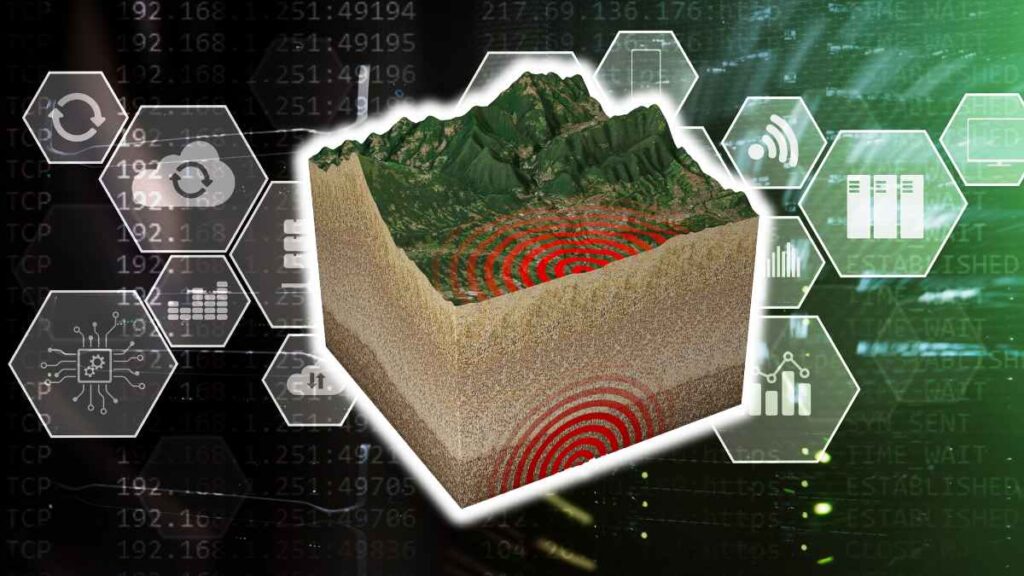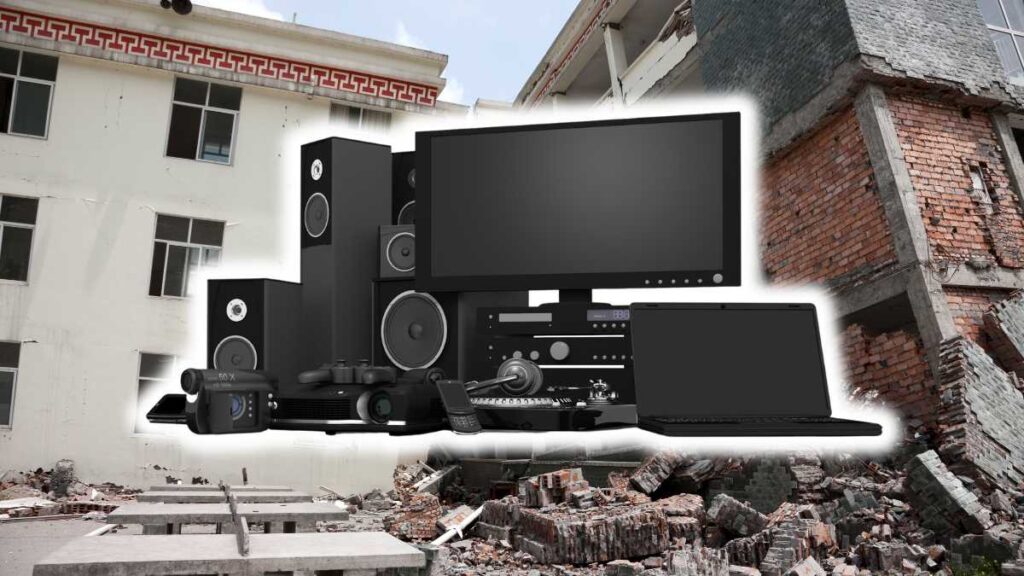Did you know that office buildings can be just as vulnerable to earthquakes as any other structure? According to the United States Geological Survey, an average of 500,000 detectable earthquakes occur each year globally. Understanding and implementing earthquake safety measures at work is essential to protect ourselves and our colleagues during these unexpected incidents.
Contents
Toggle1. Understanding Earthquakes
Earthquakes are sudden ground movements caused by the shifting of tectonic plates in the Earth’s crust. Seismic activities can result in significant destruction, including the collapse of office buildings.
The 1994 Northridge earthquake in California, for instance, caused an estimated $20 billion in damage and claimed many lives. Offices, like any other structures, are susceptible to such seismic events.
2. Earthquake Preparedness at Work
Being prepared for an earthquake at work is a collaborative effort. The following points offer a comprehensive guide on how you can be earthquake-ready in your office setting.
2.1 Understand Your Office’s Emergency Plan
Every office should have an emergency plan in place that includes steps to take in the event of an earthquake. This plan typically outlines procedures for evacuation, the location of emergency supplies, communication procedures, and more. Make it a priority to read this plan and understand your role during such emergencies. If your office doesn’t have an emergency plan, recommend to your management the importance of creating one.
2.2 Participate in Drills and Training
Regular drills and training are essential for familiarizing staff with the emergency procedures and ensuring everyone can act instinctively when a real earthquake occurs. Participation in these drills helps you understand where to go and what to do, even in stressful situations. Request or suggest frequent earthquake drills if your office doesn’t regularly conduct them.
2.3 Creating a Personal Emergency Kit
While many offices will have general emergency supplies, it’s prudent to keep a personal emergency kit at your desk. This kit should include:
- Water: At least a gallon per person per day for at least three days.
- Non-perishable food: High energy, ready-to-eat items like granola bars, canned foods, and nuts can be crucial.
- First-aid kit: Band-aids, antiseptic wipes, tweezers, medical tape, and gauze pads are good to have on hand.
- Essential medications: If you or any of your colleagues require specific medications, having a three-day supply in your kit can be lifesaving.
- Personal hygiene items: Wet wipes, toothbrush, toothpaste, and hand sanitizers can help maintain cleanliness during post-disaster situations.
- Other items: A flashlight with extra batteries, a multi-tool, and a whistle to signal for help.
RELATED:
- Easy to prepare food to stockpile for emergencies or disasters
- Effective Survival Kit – What to gather and how to maintain it?
2.4 Understand Evacuation Routes and Assembly Points
Knowledge of your office’s evacuation routes and designated assembly points is crucial in earthquake scenarios. Evacuation maps should be prominently posted around your workplace. If they’re not, advocate for their installation. Additionally, know where your assembly point is – this is where you’ll regroup with your colleagues after evacuating the building.
In an earthquake scenario, the usual exit routes might be blocked or unsafe. Make a note of alternative exits in your office building as a part of your preparedness strategy.
Being prepared for an earthquake or any disaster at your workplace is about taking proactive steps to ensure your safety and the safety of your colleagues. Remember, knowledge is power when it comes to disaster preparedness.
RELATED: Is earthquake insurance worth it? Discover if you need it
3. What to do During an Earthquake
If an earthquake strikes while you’re in the office, it’s crucial to react quickly and correctly to protect yourself and others. Here’s a detailed action plan for office workers during an earthquake.
3.1 React Immediately: Drop, Cover, and Hold On
As soon as you feel the shaking, drop to your hands and knees to prevent being knocked over. If you’re near a sturdy desk or table, get under it for cover. If not, cover your face and head with your arms and crouch against an interior wall, away from glass or other hazards. Hold on until the shaking stops – most injuries in earthquakes result from falling objects, not collapsing buildings.
3.2 Calm and Clear Communication
In high-stress situations like earthquakes, panic can spread quickly, leading to chaos. Make an effort to reassure others around you, using clear, calm language. Encourage your colleagues to stick to the ‘drop, cover, and hold on’ protocol, and remind them that the shaking will stop eventually.
3.3 Avoid Certain Areas
Stay away from windows, glass, doors, and other hazards. The shaking can cause these to break and shatter, creating a danger zone for injuries. Avoid standing under heavy light fixtures or other suspended objects that can fall and cause injury.
Avoid elevators during an earthquake. If you’re in an elevator when the quake starts, press all the floor buttons and exit as soon as you can, then ‘drop, cover, and hold on.’
3.4 Stay Indoors Until the Shaking Stops
Contrary to popular belief, rushing outdoors can be more dangerous as you risk being hit by falling debris or glass. Only when the shaking completely stops should you consider evacuating, and even then, you must be cautious of aftershocks.
3.5 Evacuation Post-Earthquake
Once the shaking has stopped, gather your personal belongings quickly (if safe to do so) and evacuate the building via the pre-determined routes. If these routes are blocked or unsafe, use your knowledge of alternative exits. Proceed to your office’s pre-designated assembly area. Do not re-enter the building until it has been deemed safe by professionals.
RELATED: 10 things not to do during an earthquake if you stay in a high-rise building like a condominium
4. Post-Earthquake Safety
Surviving an earthquake is a harrowing experience, but it’s essential to remember that the danger doesn’t necessarily stop when the shaking does. In the aftermath of an earthquake, you must follow certain safety measures. Here are key steps to follow in an office setting.
4.1 Checking for Immediate Dangers
Once the shaking has stopped and you’ve safely evacuated the building, there are a few immediate hazards to consider:
- Gas Leaks: If you smell gas or hear a hissing sound, move away quickly and notify the relevant authorities. Do not use electrical switches, mobile phones, or anything that could cause a spark.
- Electrical Hazards: Watch out for exposed wires or sparks. Do not touch electrical equipment if it’s wet or if you’re standing in water.
- Structural Damages: Look out for signs of structural damage to the building. If you see cracks in walls or ceilings, fallen debris, or misaligned doors and windows, notify building management immediately.
4.2 Accounting for All Colleagues
Once you’ve reached your assembly point, help account for all your colleagues. It’s crucial to ensure everyone has evacuated safely. If anyone is missing, inform your office’s safety officer or the emergency services if they are present.
4.3 Following Instructions of Emergency Services and Building Management
Post-earthquake, the instructions from emergency services and building management are essential. They have the training and resources to assess the situation accurately. Their directives may include staying at the assembly point, not re-entering the building, or even moving to a new location if aftershocks are expected. Always follow their guidelines for your safety.
4.4 Communication with Family
Once you’re safe and accounted for, it’s time to let your loved ones know. Send a quick message or make a phone call to let them know you’re safe. If you’re unable to get through, use social media or disaster communication services like the Red Cross’s Safe and Well website to communicate your status.
5. Making Your Office More Earthquake-Resistant
Earthquakes can strike without warning, so it’s vital to make our workplaces as resilient as possible to minimize potential damage and ensure the safety of all employees. Here’s a more detailed exploration of how you can create an earthquake-resistant office:
5.1 Securing Furniture and Equipment
- Heavy Furniture: Tall bookshelves, filing cabinets, and other heavy furniture should be anchored to walls to prevent tipping. Use flexible fastenings like nylon straps to ensure they stay in place but have a bit of give during the shaking.
- Office Equipment: Computers, printers, and other electronic equipment should be secured to desks using Velcro or adhesive pads. This not only prevents potential damage to the equipment but also ensures that they won’t fall and cause injury.
- Wall Hangings and Décor: Use closed hooks to hang pictures and artwork so that they don’t jump off during an earthquake. Avoid hanging heavy objects directly above seating areas or workstations.
- Light Fixtures: Ensure that ceiling-mounted light fixtures and other elements are securely fastened. Retrofitting might be required for older buildings where these items were not originally secured with earthquakes in mind.
5.2 Data Backup and Business Continuity
- Regular Backups: Implement a policy of regular data backups. Cloud-based solutions are ideal as they store data offsite, ensuring it remains safe even if office infrastructure is damaged.
- Offsite Storage: Keep physical copies of essential documents in a safe, offsite location. This can include company legal documents, employee records, and other critical files.
- Business Continuity Plan: Develop a plan that outlines how business operations will continue post-disaster. This might involve setting up a temporary office, utilizing remote work strategies, or pre-arranging agreements with third-party vendors and suppliers.
5.3 Cultivating a Culture of Preparedness
- Training and Drills: Regularly conduct earthquake drills to ensure every employee knows what to do during and after a quake. This will also help identify potential problem areas in your office setup that need to be addressed.
- Educational Sessions: Host sessions where employees can learn about earthquake preparedness, both for the office and for their homes. Knowledge empowers individuals to act responsibly and confidently during emergencies.
- Feedback Mechanism: Allow employees to share their feedback after drills or real events. Their insights can be invaluable in improving safety protocols.
- Resource Availability: Make sure that every employee has access to safety resources, such as information pamphlets, first aid kits, and emergency contact numbers.
RELATED:
Conclusion
In the modern workspace, earthquake preparedness transcends basic safety drills—it’s about fostering a proactive culture of resilience and preparedness. As our environments evolve, the importance of securing physical assets like furniture and technology becomes paramount.
But beyond tangible measures, the true strength of an organization lies in its collective consciousness about safety. Regular training, continuous feedback, and fostering a sense of responsibility among employees are as vital as anchoring a bookshelf. Data backup and business continuity aren’t just best practices for efficiency but essential lifelines in the face of unforeseen disasters.
Ultimately, the objective is twofold: to minimize potential damage and, more importantly, to ensure the well-being of every individual within the office. As we prioritize these measures, we pave the way for a safer, more responsive work environment, ready to face the challenges of tomorrow.
RELATED:
- Ultimate earthquake guide for seniors: Staying safe and prepared in quake-prone areas!
Safeguarding our pets against frightening Earthquakes: A comprehensive guide
Should you inspect your house after an earthquake? Ultimate guide
Related from External Sources
- Earthquake Safety in the Workplace, https://www.fbiic.gov/public/2011/aug/Workplace_Guide.pdf
- How to Survive an Earthquake at Work: 25 Top Tips, http://www.college.ucla.edu/personnel/staff/emergency/earthquake_25safetytips.pdf
- How to Improve Earthquake Safety in the Workplace, https://www.score.org/resource/blog-post/how-improve-earthquake-safety-workplace
- Earthquake Preparedness Checklist for the Workplace, https://smallbusiness.chron.com/things-anticipation-work-stoppages-81667.html
- Earthquake Preparedness Guide for Workplaces, https://metrosafety.ca/earthquake-preparedness-guide-for-workplaces/
- Earthquake Planning for Business, https://www.iclr.org/wp-content/uploads/PDFS/earthquake-planning-for-business.pdf
- Best Ways to Prepare & Keep Your Business Safe in an Earthquake, https://www.agilityrecovery.com/article/earthquake-safety-preparedness
- Earthquake Preparedness for Businesses, https://www.ajg.com/us/disaster-preparedness/earthquake-preparedness/earthquake-preparedness-for-businesses/
- Earthquake Preparedness and Response, Occupational Safety and Health Administration – United States Department of Labor, https://www.osha.gov/earthquakes/preparedness
- Earthquake Preparedness Guide for the Workplace, https://www.gurmuoccmed.com/blog/workplace-earthquake-preparedness-guide/
- Earthquake Safety at Work, https://www.acgov.org/cao/rmu/programs/safety/topics/earthquakes.htm
- Four Earthquake Preparedness Tips in the Workplace, https://www.alert-software.com/blog/four-earthquake-preparedness-tips-in-the-workplace
- Is your workplace prepared for an earthquake? https://www.safetyandhealthmagazine.com/articles/17274-is-your-workplace-prepared-for-an-earthquake




